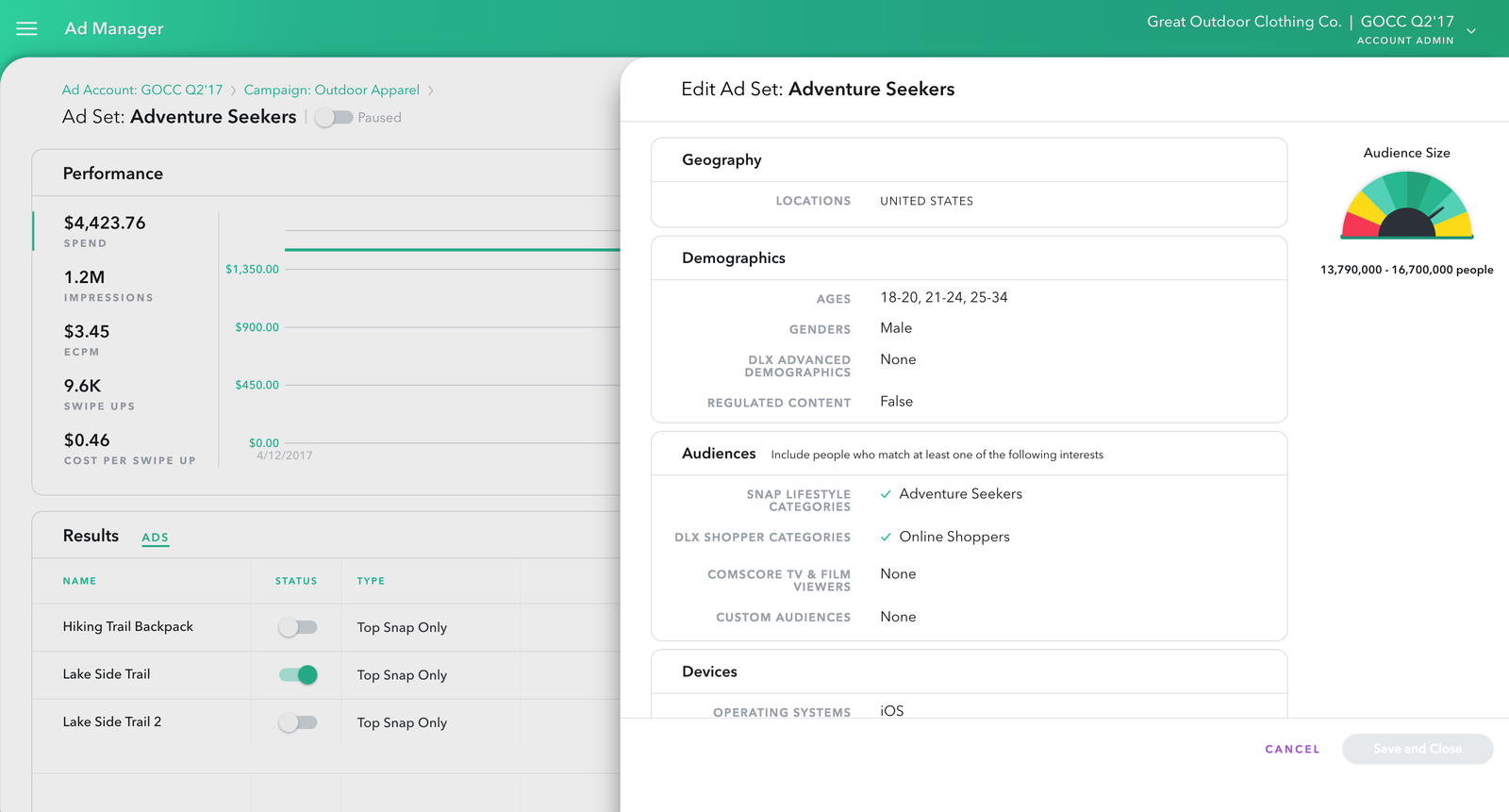Social advertising is nothing new, and most digitally savvy businesses are likely to have at least dipped their toe in the water when it comes to social ads. Platforms like Facebook, Instagram and Twitter allow businesses to quickly and easily set up advertising campaigns, whether they have a budget of £10 or £100,000.
However, Snapchat, which has allowed adverts for a number of years, has always felt like more of an exclusive club. Typically Snap Inc has only entertained the notion of huge brands with hundreds of thousands of pounds in advertising budget advertising on its platform. Not so anymore. Changes to Snapchat’s advertising infrastructure mean it’s easier than ever for small businesses to get involved. But what are the changes, and how can small businesses start advertising on the platform?
What changes have been made?
In June, Snapchat rolled out its self-serve Ad Manager, which allows marketers to buy, edit, and manage their ads within an integrated platform. Previously, advertisers would have to contact Snap directly and speak to one of their account managers. However, as discussed, this was a privilege reserved only for the biggest brands with the largest budgets. By taking the personal touch of the account manager out of the equation and allowing smaller businesses to engage with the platform, they are throwing open the doors to anyone and everyone who wants to advertise on their network.
Perhaps the biggest change is the lack of a lower threshold for a budget, allowing marketers with even the most modest of budgets to get their content seen on the platform. This brings the platform in line with Facebook and Instagram, whose success in generating advertising revenue Snapchat will surely hope to emulate.
So how does the ad manager work?
To be honest, it’s largely similar to Facebook’s awkward, yet powerful Ads Manager interface, but much more stripped back and user-friendly. The targeting options are not quite as precise as they are on Facebook – which mines sizeable amounts of data from its user base – but despite this, there are numerous targeting options to choose from.
Firstly, you can pick from location, age and gender, three standard targeting metrics for social ads. It then allows you to narrow down your audience by their interests, and their shopping habits. None of it is as in depth and highly targeted as Facebook, but it does allow a degree of control over who sees your ads.
Why should I advertise on Snapchat?
You would be forgiven for thinking that – considering Facebook’s spectacular targeting options – Snapchat is an inferior product. Snapchat, however, has an ace up its sleeve that Facebook cannot match. While youngsters are either leaving Facebook in their droves or not bothering to sign up in the first place (probably because in 2017, their parents don’t just have an account, they actually use it), the user base of Snapchat is overwhelmingly young. 71% of the app’s users are under 34 years old, with many older users preferring other similar products, such as the stories feature on Instagram. This means that, if your target demographic is under-30, Snapchat ads allow you to reach those users who don’t use Facebook regularly. With the new changes to the ad manager interface, it will be easier than ever before for marketers to reach this audience.




